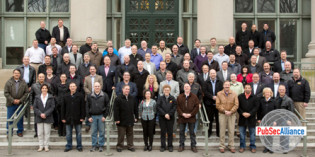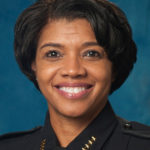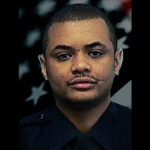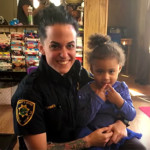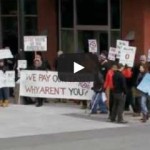For Real Community Policing, Let Officers Do Their Jobs
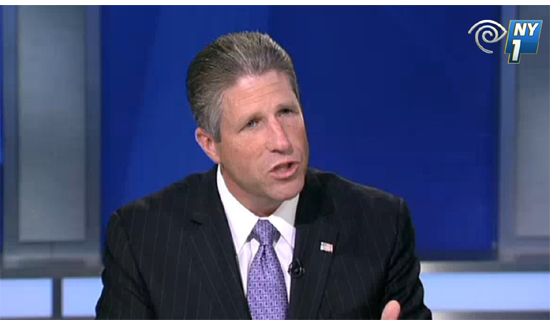
Patrick J. Lynch is the president of the New York City Police Benevolent Association.
By Patrick Lynch, President, New York City Police Benevolent Association (PBA)
All policing should be community policing. Police officers and residents work together every day, because it’s the only way to keep the streets safe. Over the past 30 years, though, whenever there has been a need to heal a rift between the police and the public, this basic principle has gotten watchword status.
We face such a rift today, particularly in New York City’s African-American and Hispanic communities, largely because of Police Department policies that inhibit true community policing and set harmful quotas for arrests and other police activities, like “stop, question and frisk.”
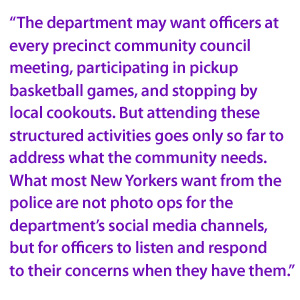
Police officers have recognized for decades that the department was driving a wedge between officers and the people we serve by making our jobs dependent on meeting these mandates—reducing public safety to a numbers game. As far back as 2004, the Patrolmen’s Benevolent Association warned that quotas were harming residents and police officers alike, and we filed grievances and fought for expanded state anti-quota legislation to stop it.
Unfortunately, our elected leaders and the courts have too often ignored these failed management policies, focusing instead on saddling police officers on the street with additional burdens and scrutiny. In doing so, they have advanced the false narrative that New York City police officers are, as a group, bad actors motivated by personal racial prejudice. This narrative has made our jobs far more difficult, and has further damaged the relationship with the New Yorkers we serve.
Now the city is once again calling for community policing as a means of repairing the damage, and once again some officers on the street and community members are skeptical. We have seen similar strategies, such as the Community Patrol Officer Program from the 1980s, tried out and eventually abandoned. In order for the current iteration of community policing to succeed, it must be given the proper staffing resources. It must also treat police officers as professionals and allow them the discretion to effectively carry out the strategy in the real world.
But our head count has dropped by approximately 6,000. Many precincts face a serious backlog of radio calls, and officers on patrol are routinely assigned multiple jobs at once. Meanwhile, officers are pulled from local precincts to staff specialized units or to cover special events.
Now, under the current plan for community policing, a handful of neighborhood coordination officers would have dedicated time off their radios to address community policing issues. But if that forces others to double up or keeps them from responding to potentially critical calls, we’ll be making things worse and could even prevent the development of strong ties with the community.
The department may want officers at every precinct community council meeting, participating in pickup basketball games, and stopping by local cookouts. But attending these structured activities goes only so far to address what the community needs. What most New Yorkers want from the police are not photo ops for the department’s social media channels, but for officers to listen and respond to their concerns when they have them.
Officers want to have those types of conversations. They let us resolve some situations without resorting to enforcement action while also learning who the truly bad actors are. It’s not enough for those conversations to happen only at formalized community policing activities.
Unfortunately, like the numerically driven enforcement model, the formal community policing strategy implies that officers cannot be treated as professionals, trusted to exercise proper judgment in any situation without micromanagement. It pressures them to produce documentable “activity,” paralyzes them with bureaucratic second-guessing and threatens to turn “community engagement” into just another box to check.
If this approach continues the department will lose smart, highly qualified officers to other police departments that provide competitive wages, respect and fairer treatment. Stronger community relationships require keeping our best police officers and being able to recruit the best. They also mean giving them incentives to remain in roles that work directly with the community, instead of jumping at the first opportunity to get off the street and into a specialized unit.
If city neighborhoods lose these officers and cannot attract new ones of the same caliber, the impact will be significant, especially in the areas that need them most.
New York City police officers don’t want to look elsewhere, because the communities we protect are our communities, too. Sixty percent of New York City police officers live in the five boroughs. We want the same as our fellow New Yorkers: safe and livable streets. If we work together, with the tools, support and the right strategy, we will make sure our communities are safer and stronger for years to come.






